How Web3 & Music NFTs Could Change The Music Industry
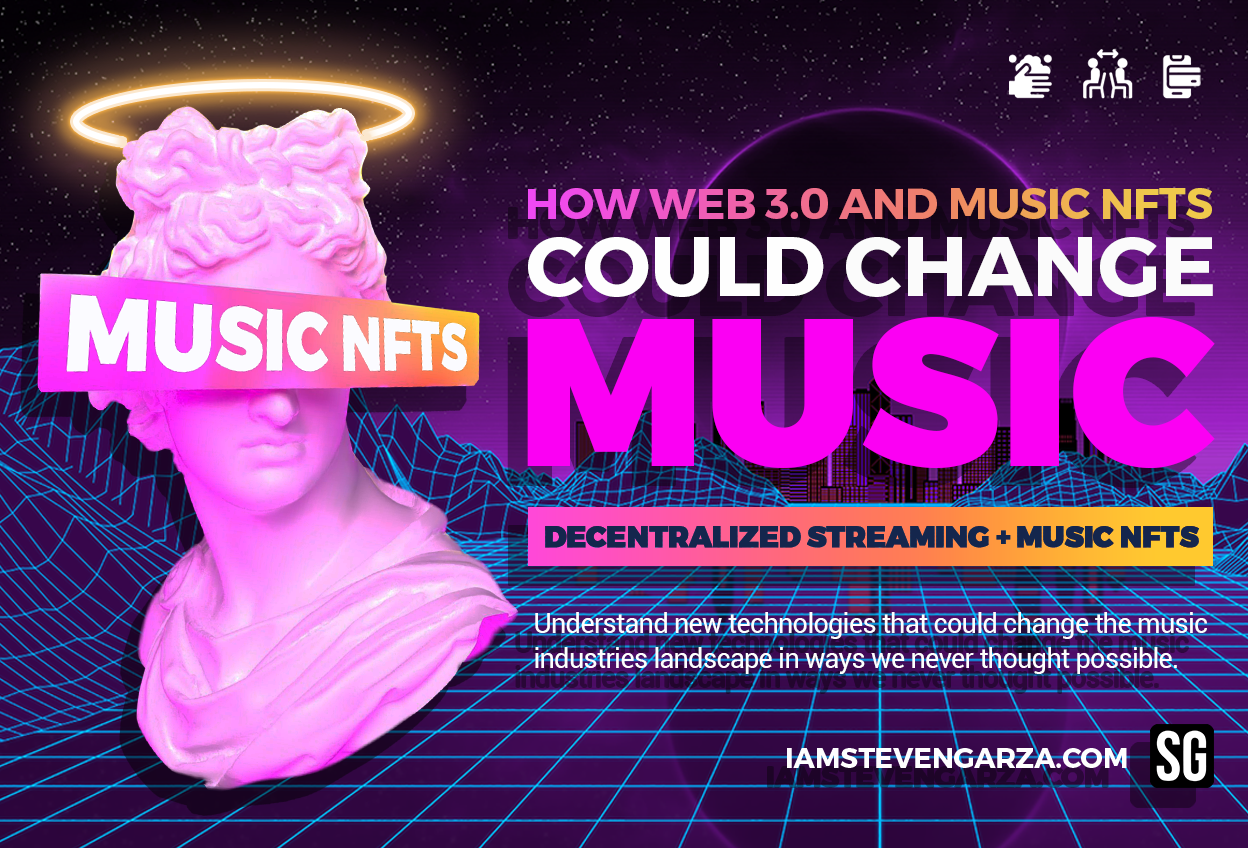
The following content is for informational purposes only. You should not construe any such information or materials, investment, financial or other advice. Nothing contained here constitutes a solicitation, recommendation, endorsement, or offer for a third-party service provider to buy, or sell any securities or other financial investments whatsoever.
In 2022, global recorded music revenues are estimated to be worth 25.9 billion dollars of which experts say only 12% of that revenue goes to artists.
It’s common knowledge that there have been discrepancies with music ownership and fair pay in the music business for many years. The lack of fair compensation for artists goes back even further in the art world as many of the greatest artists who have ever lived such as Vincent Van Gogh, Paul Gauguin, and Rembrandt all died penniless.
In 2022, this could all change for artists due to advances in Web3, Music NFTs, and blockchain technology that are becoming more accessible to everyone and could change the music industry.
To understand the future, we must first understand the past.
The music industry has always operated on a heavily royalty-based system. In the past, the primary form of compensation was based on physical record sales, and touring and merchandising coming in after.
2018 saw a decline in CD sales by 23%, with 32 million CDs sold, nearly 100 million less than in 2008. That year, one of the largest music retailers in the United States Best Buy, decided to stop selling CDs. This change was also brought on partly by the record labels themselves as they increasingly became reluctant to issue physical copies of music due to the rise of streaming and digital sales.
Industry experts reported that streaming accounted for 62% of all music industry revenue in 2018.
Streaming services like Spotify, Apple Music, and YouTube are now the dominant channels of music consumption with streaming subscription revenue consistently going up.
The dominance of streaming has proved beneficial for select artists who dominate the charts in some ways, but this technology also presents many challenges.
Understanding Digital Streaming
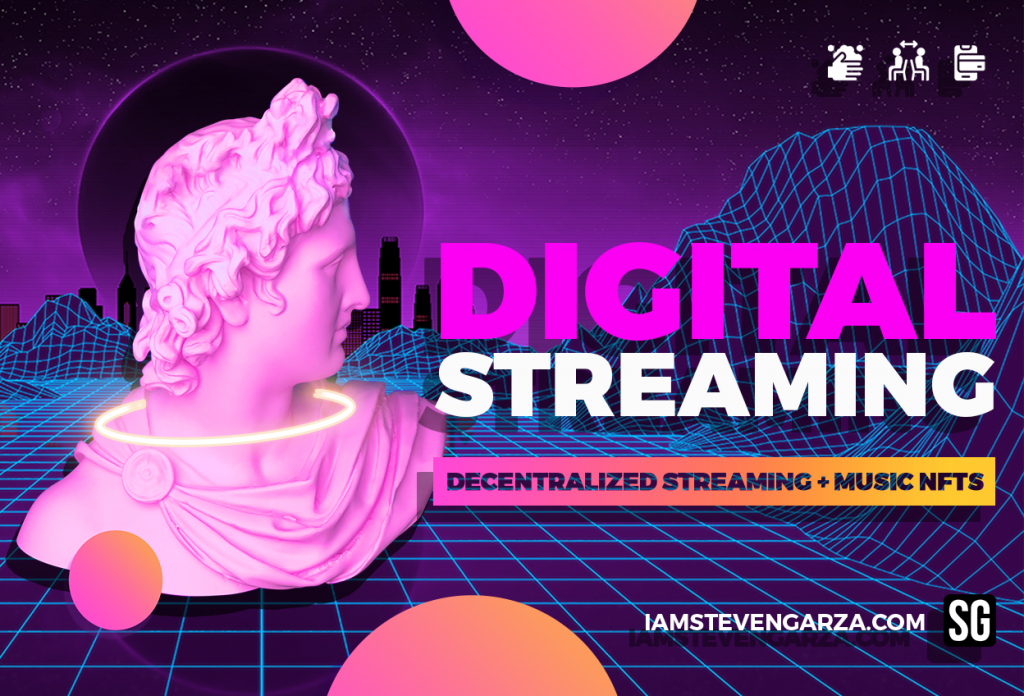
Music streaming services have greatly impacted the industry by reducing the need to purchase music and changing the way that artists are compensated.
Before digital, fans would have to buy an entire album to be able to hear one of their favorite songs at a cost of about $15 to $20 an album, and the artist only received 10-20% from each sale. 20 years later, $15 to $20 for a song or even an album seems absurd as you can hear almost any artist, album, or song for an estimated $10 monthly subscription to a streaming service.
With the lack of music sales, labels restructured revenue strategies and put more focus on digital sales, streaming, touring, and merchandise.
COVID-19 exposed vulnerabilities that exist across all major industries. For the music industry, the pandemic impacted the business as it had never seen before. The collapse of the live events spaces affected not only the business but the hundreds of thousands of people who work in it.
Streaming platforms became the saving grace almost exclusively to superstar artists, whose revenues come not only from live performances, but also royalties for music played in public spaces such as bars, restaurants, clubs, and shops, most of which were shut down across the world in waves of lockdowns.
Streaming Payout Challenges
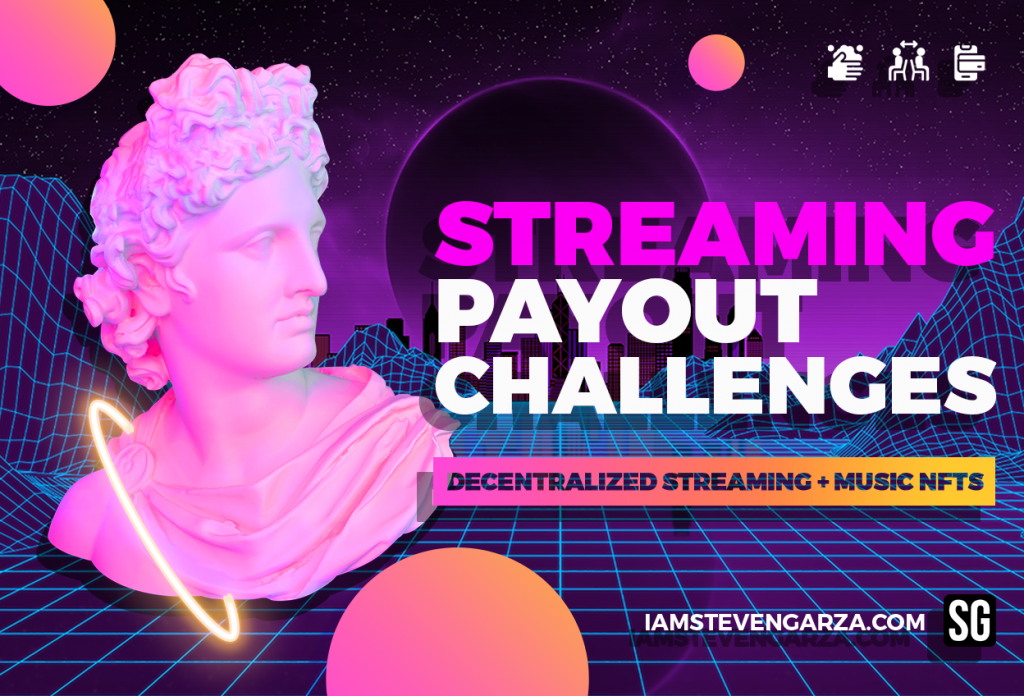
Many artists have pointed out that current streaming models are inadequate and only allow major labels to maximize their revenue while some musicians struggle to earn any money. The big streaming platforms continue to emphasize the values of streaming, however, very few artists would argue that these powerful platforms really saved the music industry during the pandemic.
Some of the biggest artists have raised their voices to challenge streaming percentage payouts. One of the first and most notable cases was Taylor Swift who pulled all of her music from Spotify at the height of her career.
“I’m not willing to contribute my life’s work to an experiment that I don’t feel fairly compensates the writers, producers, artists, and creators of this music,” she said. “And I just don’t agree with perpetuating the perception that music has no value and should be free.”
It’s a small per-stream royalty, but for someone like Swift, a one-cent-per-stream model would likely rack in millions. Spotify said in 2014 that an unnamed but real-life artist was earning $425,000 per month in royalties for a “global hit album,” a category likely containing 1989, which set a record for one of the best-selling weeks ever for an album by a female artist.
Streaming Pay Rates In 2022
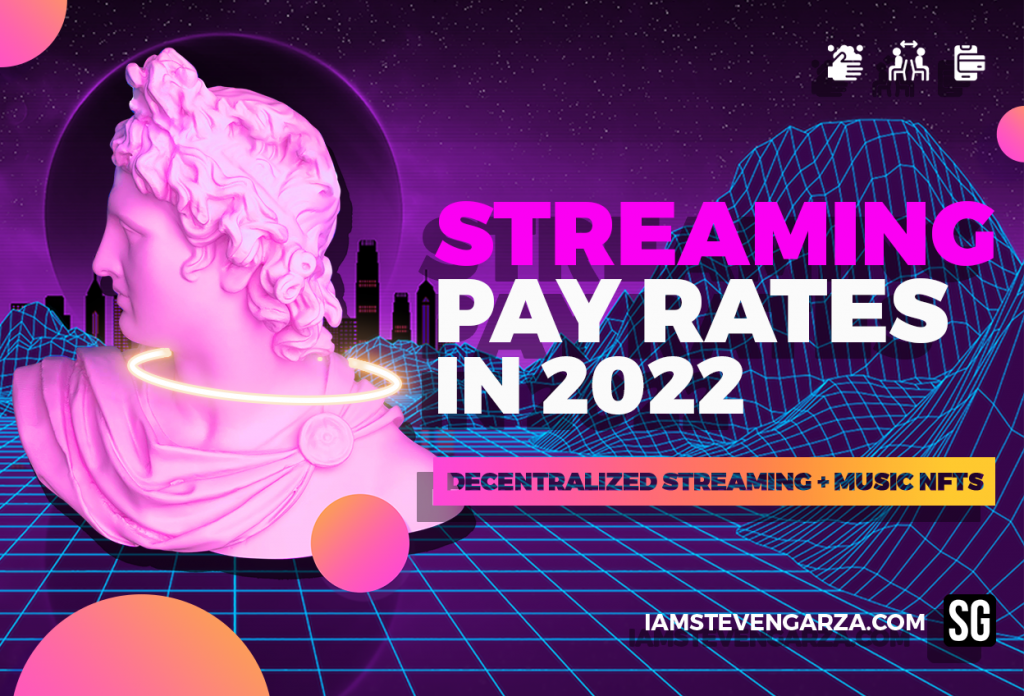
On average, Spotify pays out between $0.003 to $0.005 per stream using a proprietary model that they call “stream share “. Several factors are taken into account to determine how much of the “stream share” an artist will receive, this includes country of origin, time spent listening, and the total percentage of streams that an artist brings into the platform. To further complicate payouts, rates are rarely paid at a flat rate per stream, agreements are ever-changing, different tiers and subscriptions impact pay rates and streams are more valuable in various areas worldwide.
Let’s say the platform achieved 1 million streams in the previous month, and one artist was responsible for 100,000 of those streams. That artist would be entitled to 10% of the revenue pool. How much the artist gets paid will also vary if they are signed to a label and the number of credits assigned to the song.
In layman’s terms that means that for every 250 streams on Spotify, an artist could afford to purchase a coffee or one of their songs on iTunes.
How many Spotify streams equal $1,000? Well, if we do the math; 1000 divided by $0.004 = 250,000. So an artist has to roughly achieve 250,000 streams on Spotify in order to make around $1000. In other words, an artist needs a couple of sold-out stadiums with people to all to listen to their music to reach around $1000.
How Many Spotify Streams Does An Artist Need To Earn Minimum Wage?
In 2020, the United States set the Federal minimum wage to $7.25 per hour.
2,080 hours of annual work is considered a full-time job, which earns an annual income of $15,080. For an artist to achieve a minimum wage salary of $1,257 a month on Spotify, it would take an estimated 314,250 streams a month, and 37,710,000 a year to earn as much as a recent high school grad working at a fast-food restaurant in the United States. To put things into perspective that is the equivalent of 250 stadiums filled with people with each holding 150,000 ppl capacity a year (which still only puts you at 37,500,000).
Obviously, only a select percentage of the music industry can make a living off these percentages, so unfortunately the majority of artists have been forced to use their music as a vehicle to make money from touring and merchandise.
Basically, the streaming of the actual music has little value in comparison to what once was regarded as secondary and third revenue streams which are touring and merchandise.
Streaming Algorithm Challenges

Many artists are unhappy with Spotify’s algorithm because it is said that it only counts a song stream and pays the artist once the song plays for over 30 seconds. There is a 35% probability that a song will be skipped before it reaches 30 seconds, so artists and producers are put in a position, where they need to prevent skipping as much as possible and hold the listener’s attention for at least 30 seconds. This can lead to songs attempting to fit strict models, cramming in the most exciting parts of a song immediately, and in return also making songs shorter. This could be observed on the billboard hot 100 charts in the U.S. where songs on average have become shorter over the course of time. Take Lil Nas X’s Old Town Road, which is only one minute and 57 seconds and the average song duration is 3 minutes and 30 seconds.
There are many other causes for concerns that one could address, but I think we can all agree that the current business models available need to be updated.
Artists should be able to continue to create the music that we love and receive fair compensation for all of their hard work.
Music And Blockchain Technology

After more than two years of a global pandemic, following what seemed to be a never-ending sequence of postponements, rescheduling, and cancellations, live music is finally returning, and with it, new technologies that could change the music industries landscape in ways we never thought possible.
Just as musicians had to pivot during their absence from the stage and find new and meaningful ways to stay connected with their fans, the Web3 community has been incubating ideas using blockchain technology to disrupt both the music industry’s physical release and streaming music models.
A blockchain boom in the music industry is imminent thanks to increasing growing areas such as non-fungible tokens (NFTs), and decentralized autonomous organizations (DAOs).
With each of these technologies, the creators of music’s future can envision more manageable, faster, and more accurate payments for their work.
Through smart contracts, the existing slow process of royalty payments could be reduced from multiple months to possibly seconds.
Every time a person listens to a song, musicians could be paid near instantaneously. Smart contracts that settle royalty payments in real-time will also remove the need for third-party companies, leaving more revenue in the hands of the artists and creators.
Artists will be empowered to establish direct seller-consumer relationships with their fans, with blockchain technology as the foundation. Beyond being extremely fast and secure, a blockchain is global in scale and exceptionally transparent. Fractional ownership already implemented will bring a new level of transparency in proving ownership over a specific piece of music and confirming every individual with a claim to its copyright.
Artists could have access to accurate metrics and analytics of streaming and fan engagement data instead of the limited access to watered-down data that they may currently receive from distributors or streaming platforms.
The future of music is one where a radical change to the way music publishing, royalties, launching and managing record labels, and even building music software will be achieved.
Experimenting with music NFTs, virtual events, and decentralized communities, DAOs are building tools to enable musicians to help enable change in some of the current business models. Artists could retain full ownership of everything they create and avoid restrictions on contracts.
Another potential change in the music business is the launch of Web3 record labels which could operate like DAOs, providing funding, support, resources, and even minting and other services an artist might require. But with shared ownership, transparency and a blockchain-inspired business model is what will make it appealing to artists.
What Are Music NFTs And Why Do They Matter?
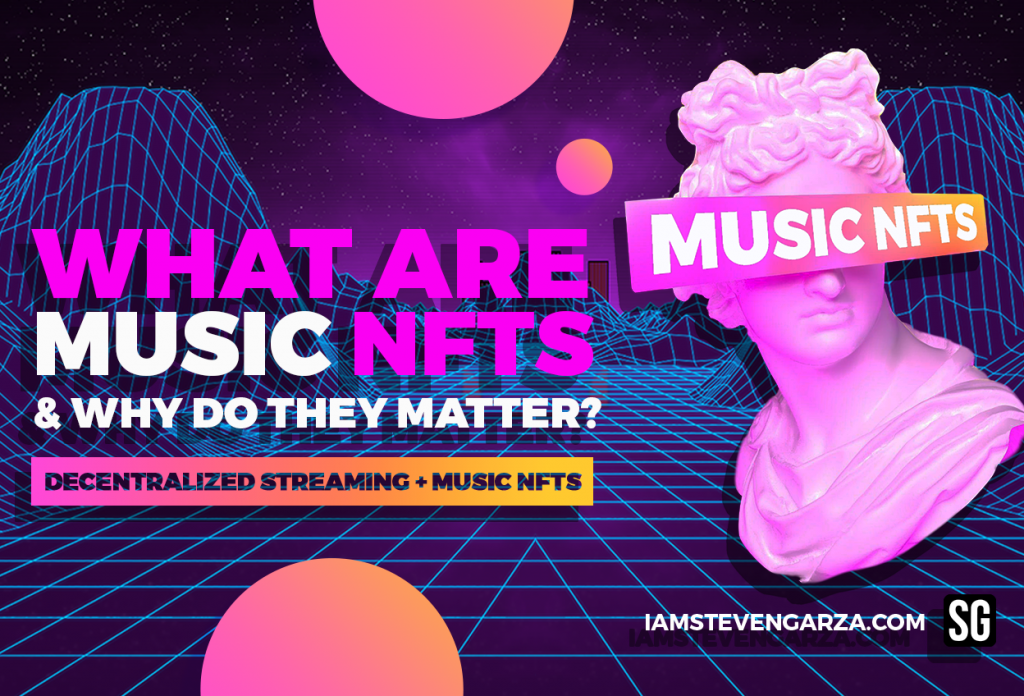
On the surface, music NFTs may appear like the blockchain alternative to buying tracks on iTunes. However, when you buy a track on iTunes, you only buy the right to listen to that music. There’s no asset ownership on iTunes – only a license to listen to what you’ve just paid for. In contrast, music NFTs let anyone listen to tracks but also confer ownership over that file through an NFT.
Music NFTs might sound counterintuitive: Why buy the music you can already listen to? The answer to that question is the same as buying JPEGs anyone can right-click and save. Markets, or people, find value in ownership of provably unique and original assets.
For some, that value could come from a closer relationship with the artist they like. For others, it could be financial exposure to an artist who they believe will thrive. If the artist becomes successful, the value of the music NFT they’ve invested in could rise.
Music NFTs can generate lucrative revenue for some artists. One music NFT supporter @Cooopahtroopa estimated that Bajan rapper Haleek Maul made $226,800 in music NFT sales on Catalog, while his annualized Spotify earnings are just $178. When asked about the figures in the tweet, Maul confirmed to CoinDesk that he’s made 81 ETH from five Catalog sales, which at the time was worth more than $250,000.
There is a wide range of potential use cases for music NFTs. They can be used to grant access to discounted concert tickets, special areas at concerts or meetups with the artist. It all depends on how the artist wants to structure the NFTs they issue. After all, as Wired editor Kevin Kelly has long argued, all artists need are 1,000 true fans who will support them – and NFTs help capture that idea for an increasingly digital world.
Unless specified, music NFTs give buyers no royalty or copyright claims – just as jpeg NFTs don’t either by default. But there’s also a growing subsector of royalty-oriented music NFTs that we cover below.
Different Forms of Music NFTs
There are a few different forms of NFTs in the music space. Let’s explore the different ways NFTs have changed the traditional way you can experience music.
Full Songs and Albums
Always wanted to own the first-ever vinyl of your favorite song or album? Now you can. More and more artists and musicians have started using NFTs to connect with their audience by releasing exclusive songs and records.
Recently launched on Binance NFT, Trey Songz, award-winning R&B singer, curated an exclusive NFT Mystery Box that features unreleased new songs and exclusive music pieces composed by Trey Songz himself.
Another set of NFTs in the collection includes other rewards such as the newest songs, the opportunity to have zoom calls, and once-in-a-lifetime music co-creation with Trey.
Digital artwork and photos Artwork plays a big part in a musician’s artistry and, to a certain extent, income. Digital artwork and pictures can include limited edition album covers, posters, and exclusive behind-the-scenes images from concerts.
The bonus of an NFT ticket helps combat ticket fraud and you can technically never misplace it! Video clips from your favorite performances Much like the ‘NBA Topshot’ NFT video clips, now you can memorialize a moment at a concert that was special to you by purchasing it as an NFT and even potentially digitally displaying it in your home.
Web 3.0 and Value of music NFTs In the Web 3.0 era where “people create content, people earn money”, NFTs are especially useful to independent artists who are not signed to a music label.
This is because NFTs give artists complete control and ownership of their creations. Moreover, artists do not have to be tied to streaming platforms since they can independently release their music to the public.
What’s more, NFTs are forging a new path for independent artists, offering them a great opportunity to generate additional revenue streams from their music and create exclusive content for their fans.
The Potential of Music NFTs In The Music Industry
In most cases, people who purchase music NFTs aren’t buying the rights to the audio or composition, but paying for virtual bragging rights and supporting artists they feel are undervalued by the traditional system.
On top of allowing artists to earn commission-free revenue, NFTs offer a great range of flexibility to artists as they can literally auction any form of digital assets. This includes songs, full albums, merchandise, concert tickets, and much more, which puts a lot of power back in the hands of artists by giving them an alternative way to monetize their art or other forms of digital merchandise.
With all that said, even major industry players are also jumping onto the NFT train. For example, Warner Music Group has a partnership with Genies, a company that creates digital avatars and wearables. And Universal Music Group joined forces with a Bored Ape Yacht Club to form a metaverse band called Kingship.
Decentralized Streaming Platforms
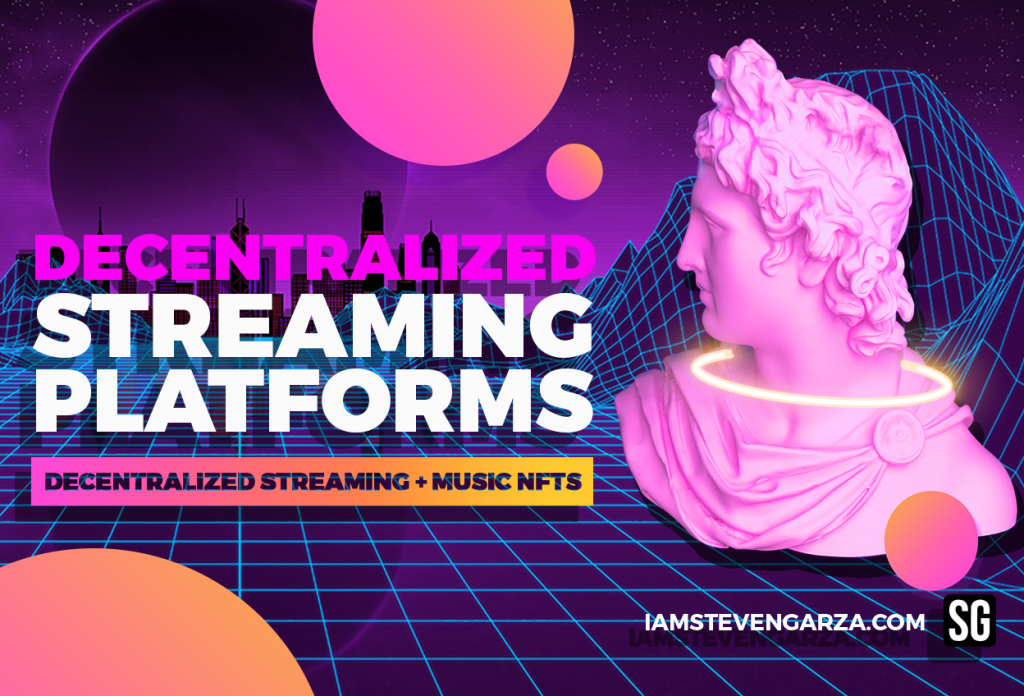
Decentralized streaming music platforms will be one part of the future music industry landscape. Community-driven instead of centralized like traditional platforms will give artists more freedom to express themselves with built-in legal infrastructure support.
Audius is the world’s first fully decentralized music streaming platform that enables listeners to support artists directly via its native cryptocurrency, AUDIO. As of December 2021, Audius has almost 6 million monthly unique users and hosts over 100,000 artists. Co-founded in 2018 by Forrest Browning and Roneil Rumburg, Audius revolutionalizes the traditional music industry model by removing the middlemen and record label barriers.
How does Audius work?
Audius aims to solve the challenges artists face in the music industry, including music rights, royalties, and ownership, by giving everyone the freedom to distribute, monetize, and stream music. It eliminates the intermediaries between artists and their audience, allowing them to interact directly on the platform.
Unlike the traditional channels of the music industry, Audius doesn’t pay artists based solely on the number of times their tracks are played. It also considers artists’ activity on the platform, the way they interact with fans, and the overall engagement from users.
On Audius, artists can upload and distribute their songs by the decentralized nodes. There are several ways for artists to earn revenue from their audio content without sacrificing their ownership.
They can get AUDIO by making it to the Top 5 Weekly Trending Track, Top 5 Weekly Trending Playlist, Top 10 Monthly API App, and first track upload after verifying their social media accounts.
Audius also let artists engage with their community via artist tokens. Artist tokens give holders exclusive access to token-restricted content, such as unreleased tracks, remix competitions, etc.
Occasionally, Audius plans to airdrop AUDIO tokens to artists based on their level of social engagement with fans and the number of listens. In the future, Audius plans to add support for USDT and other stable coins for fans to unlock paid content.
What is AUDIO?
The Audius token (AUDIO) is the native cryptocurrency that powers the Audius protocol. It serves three main functions in the Audius ecosystem: Secure the network. Act as a governance token. Give access to exclusive features and content. AUDIO is an ERC-20 token with an initial total supply of 1 billion and no maximum supply.
How Does Audius Differ From Traditional Streaming Platforms?
According to Audius, one of the major differences between Audius and Web2 streaming platforms is that it leverages blockchain technology to run in a decentralized manner.
This allows artists and content creators to share their music with more control over their content. According to the co-founders, 90% of the platform’s revenue will go to the artists directly. Compared to the general numbers in the traditional music industry, where only 12% goes to the artists, Audius allows them to earn a more reasonable pay. Another difference is that Audius includes AUDIO token holders, in the decision-making process for the network.
Holding one AUDIO token gives them one vote to participate in the governance of the protocol. They can vote for or against any proposed changes on the platform, which is not something we can find on other music streaming services.
Audius also shows that it has the ability to help artists cultivate their fan base and community. It is the first music streaming platform to partner with TikTok, a video streaming social media platform.
This partnership enables TikTok users to add songs on the Audius platform to their videos directly. Apart from TikTok, Audius has also integrated with the blockchain game DeFi Land in the form of an FM radio tower in the game’s metaverse, which could help promote artists.
Drawbacks Of Blockchain Technology
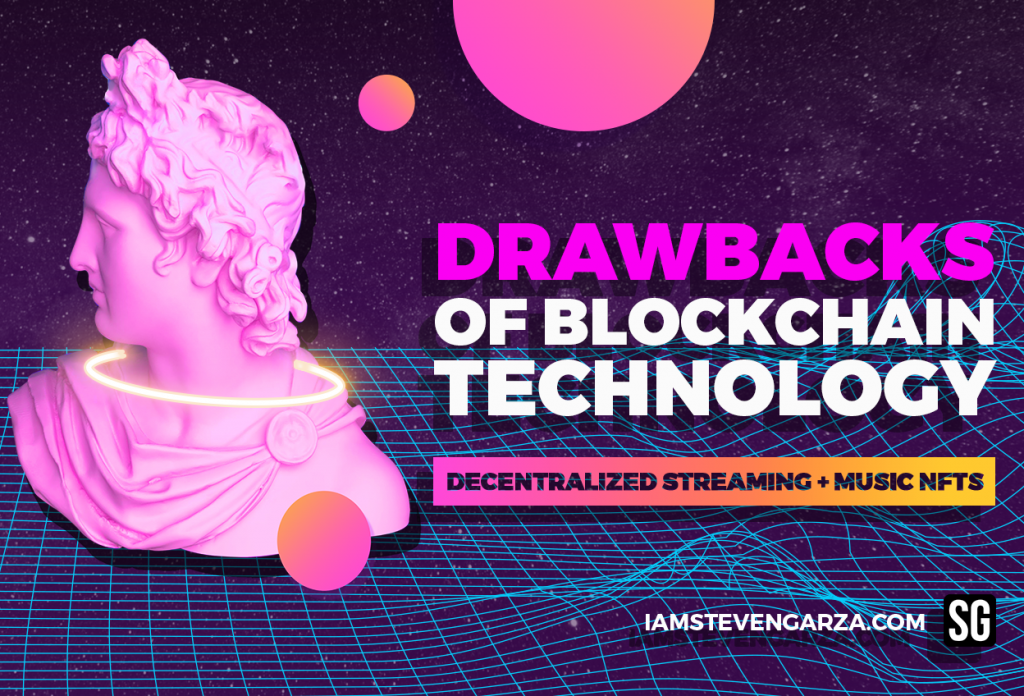
NFTs Can Be Used To Perpetuate Fraud
While the integrity of a blockchain is unquestionable, NFTs can be used to perpetuate fraud. In fact, a number of artists have recently reported discovering their work for sale as NFTs on online marketplaces — without their consent.
This obviously violates the intent of utilizing NFTs to facilitate the sale of art. The value proposition of an NFT is that it authenticates a physical work of art with a unique token, assuring the person who owns the token that they also own the original work of art.
A serious problem arises if someone creates an electronic image of the original work, attaches a token to it, and puts it up for sale on a virtual marketplace. Here, there is no link to the original work. The token is linked to a fraudulent reproduction.
NFTs Can Harm The Environment
It takes a significant amount of computing energy to create blockchain records, and there’s a growing debate around the long-term harm the process is causing the environment. By some estimates, at the current rate, the carbon emissions from mining cryptocurrencies and NFTs will exceed those associated with the entire city of London in the coming years. Blockchain enthusiasts argue that an offsetting reduction in pollution is underway as NFTs transform global marketplaces, reducing the need for travel and office space utilization.
Conclusion
Although these are all technologies that are still in their infancy, they can potentially revolutionize the way the music industry operates and provide adequate forms of compensation to artists. The most important takeaway from this article should be to be informed and become aware of how current models impact artist economies and how future technologies could change everything in the near future.
More articles at http://www.iamstevengarza.com/blog
